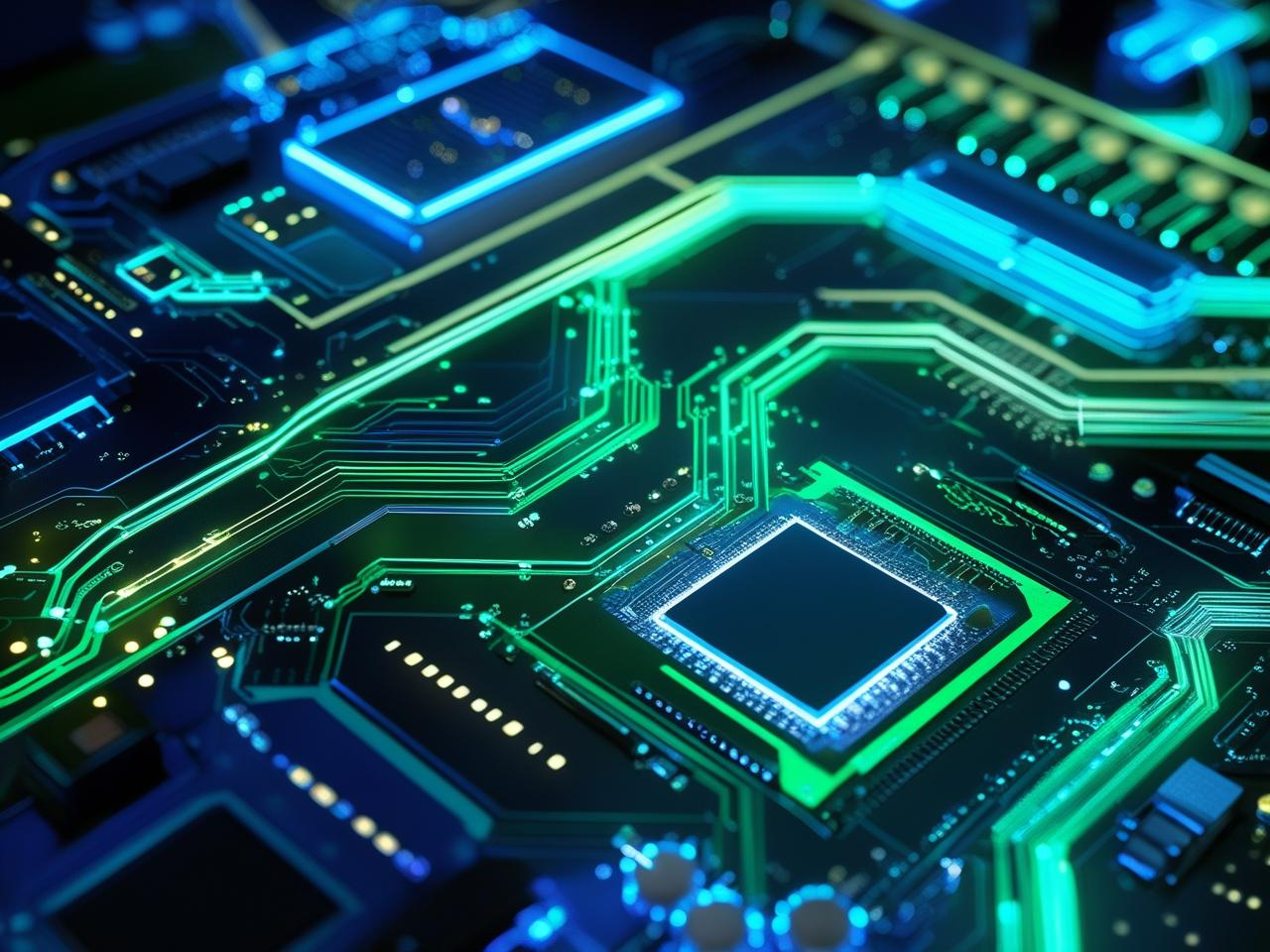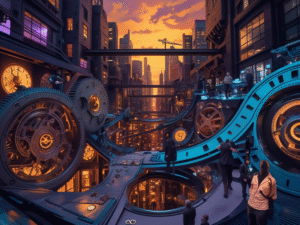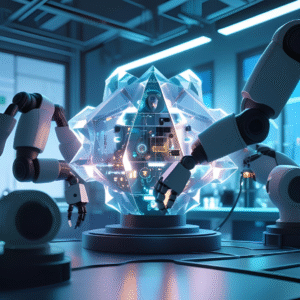Table of Contents
ToggleINTRODUCTION
The digital revolution of the 21st century is changing every element of our lives in a big way. There has never been a time like this for new ideas to come up. They range from biotechnology and space exploration to artificial intelligence and quantum computing. As the digital age goes on, new technologies keep coming out, and the ones that are currently out are changing at a dizzying rate. This article looks at the most popular and cutting-edge technologies of our time, how they work, what they do, and the industries they are changing.
IOT (THE INTERNET OF THINGS)
The Internet of Things (IoT) is altering how we live, work, and interact with the world. From smart cities to smart homes and from industrial automation to connected cars, the Internet of Things (IoT) is becoming the basis for a smarter, more responsive, and more effective world.
What is the Internet of Things?
The Internet of Things (IoT) is a network of physical objects, or “things,” that have sensors, software, and other technologies built into them. These things may connect to the internet and share data with other devices and systems. These things could be as simple as household appliances or as complex as industrial machinery.
What Does The Internet Of Things do?
IoT is built on four main parts:
1. SENSORS AND DEVICES:
These collect information about the environment, like temperature, movement, and GPS location.
2. CONNECTIVITY:
Wi-Fi, Bluetooth, cellular, and other networks let devices connect to the cloud or to each other.
3. DATA PROCESSING:
Once data has been collected, it is processed using cloud or edge computing to look at it and make judgments.
User Interface?
Users can see the processed data via dashboards, apps, or automated systems.
1. SMART HOMES:
How IoT is used in the real world
IoT lets you control things like lights, thermostats, and security systems from a distance. A smart thermostat, for example, changes the temperature automatically based on what you want.
2. CARE FOR YOUR HEALTH
Wearable equipment keeps track of important signs including heart rate and sleep patterns. Doctors can respond more swiftly in an emergency and keep an eye on patients’ health in real time.
3. FARMING
Smart sensors keep an eye on the health of crops, the weather, and the moisture in the soil. This helps farmers make better decisions and increase their yield.
4. INDUSTRIAL IOT (IIOT)
Factories utilize IoT sensors to automate tasks, keep an eye on machines, and predict problems.
Smart Cities IoT makes city living more sustainable by keeping an eye on pollution, controlling lights, managing traffic, and improving public services.
Benefits of IOT
1. MORE EFFICIENT:
It cuts down on mistakes made by people and automates tasks that need to be done over and over.
2. SAVINGS:
It uses less energy and trash.
3. BETTER DATA COLLECTION:
Gives you the most recent information to help you make better choices.
4. CONVENIENCE:
Lets you operate and automate devices from a distance.
IOT SECURITY RISK CHALLENGES
1. Cyberattacks:
Cyberattacks are more likely to happen when more devices are connected.
2. Data privacy:
Problems with who owns data and who can get to it.
3. Interoperability:
Devices from different companies could not work properly together.
4. Scalability:
Updating and managing thousands or millions of devices can be hard.
What will happen to the Internet of Things in the future
The IoT market is likely to grow quickly in the next several years. 5G, edge computing, and AI integration will make IoT devices quicker, smarter, and more responsive. In the future, we can expect self-driving cars, predictive maintenance, and even more personalized services.
Conclusion
The Internet of Things is a big change that is changing every part of our life, not just a passing trend. There are still problems to solve, but the possible benefits are huge. As the Internet of Things (IoT) grows, we will move toward a future that is smarter, more efficient, and more connected.
The Future of Connectivity: 5G and Beyond
5G, the fifth generation of mobile networks, has revolutionized how we live, work, and talk to each other in big ways. 5G is a big step up from 4G LTE since it has very fast data throughput, minimal latency, and can connect to many devices. Scientists and inventors are already looking toward what comes after 5G, like 6G and beyond, even though the world is just starting to realize its full potential.
What does 5G mean?
5G is the newest global wireless standard, following 1G, 2G, 3G, and 4G. It makes it possible:
– Data speeds are much faster (up to 10 Gbps) – Latency is very low (less than one millisecond)
– More capacity on the network (billions of devices connected)
– More reliable and energy-efficient
5G is great for sophisticated uses like these because of these features:
– Cars that drive themselves – Medical procedures and operations done from afar
– Smart cities and the Internet of Things (IoT) – Virtual and Augmented Reality (AR/VR)
5G is changing industries all around the world. What does it mean for the real world?
- Robotic equipment let surgeons work at a distance in healthcare.
- Smart factories use real-time monitoring to increase productivity in manufacturing.
- Transportation: Vehicles talk to infrastructure to keep accidents from happening.
- Entertainment: Better gaming and streaming of ultra-HD videos with less lag.
- The US, China, and South Korea are the leaders in 5G adoption, but emerging countries are swiftly catching up.
What comes after 5G?
People are already looking ahead to the next generation of networks, which are often named 6G or Beyond 5G (B5G).
Terahertz (THz) communication, which can reach rates of up to 1 Tbps using terahertz frequencies, is one of the most important ideas for Beyond 5G/6G.
AI-Integrated Networks: Networks that can optimize themselves, predict failures, and manage traffic.
Bringing together space, air, and ground: Drones, satellites, and ground-based infrastructure all work together to make sure everyone can connect.
Holographic Communication: 3D holograms in real time for online meetings and learning.
Networks that are very safe because they use AI-driven security algorithms and quantum encryption.
Brain-computer interfaces (BCIs), real-time tactile internet, digital twins of people and cities, and immersive AR/VR experiences are just some of the things that 6G might be used for.
To get over the challenges of 5G, you need to deal with:
- Lack of spectrum: Higher frequencies need new rules and facilities.
- Energy use: Faster networks need more power.
- Security risks: The more devices are connected, the more holes there are.
- Cost and accessibility: Making sure that developing countries don’t get left behind.
Conclusion
5G is already changing our world, but the trip is far from complete. We can’t even begin to anticipate how future technology will mix the digital and physical worlds. To make sure that everyone benefits from a connected future, we need to focus on innovation, cooperation, and inclusivity as we move toward 6G and beyond.
Technologies for Privacy and Cybersecurity
Using privacy and cybersecurity tools to keep the digital world safe
In our culture, which is becoming more and more digital, cybersecurity and privacy technologies are quite important. Social media, cloud computing, smart homes, and online banking all make our lives more connected than ever. This connection is useful, but it also brings new risks. As cyber dangers change, so must the tools and plans we use to keep our personal information and privacy safe.
What are technologies for privacy and cybersecurity?
Cybersecurity is the act of protecting programs, networks, and systems from cyber threats that try to steal money, disrupt operations, or get to, change, or delete important information. Privacy technology is all about keeping personal information safe and making sure that people have control over how it is collected, used, and shared.
Privacy and cybersecurity are the two things that make up digital trust.
Why Are These Technologies So Important?
New Cyber Risks:
Cybercriminals are using more advanced methods, like phishing scams and ransomware. Data breaches can hurt your reputation, cost you money, and steal your identity.
Explosion of Data:
The amount of data being created and stored is growing quickly, therefore it’s more important than ever to handle, access, and store it safely.
Regulatory Pressure:
To secure user data, governments around the world are passing stronger legislation, such as the California Consumer Privacy Act (CCPA) and the European Union’s General Data Protection Regulation (GDPR).
BYOD and remote work:
Remote work and Bring Your Own Device (BYOD) regulations make it easier for hackers to get into systems, therefore endpoint security is a big worry for them.
Key Technologies for Cybersecurity and Privacy:
1. Encryption:
This turns data into unreadable code to keep people who shouldn’t have access from getting it. It is the basis for secure communication in banking, messaging, and other areas.
2. Multi-factor Authentication (MFA):
It adds an extra degree of protection by requiring more than one way to prove your identity, including fingerprints or one-time codes.
3. Firewalls and intrusion detection systems:
They keep an eye on and restrict network traffic, looking for bad or strange behavior.
4. Virtual Private Networks (VPNs):
Make connections that are private and encrypted so you may browse safely, especially on public Wi-Fi.
5. Privacy-Enhancing Technologies:
Data masking, anonymization, and pseudonymization let people use data without giving away their personal information.
6. Machine learning and AI:
Improve the ability to find threats, analyze behavior, and respond to cyberattacks in real time.
What will happen in the future that will affect cybersecurity?
1. Quantum Cryptography:
Making algorithms that can withstand assaults from quantum computers.
2. Biometric Authentication:
Using voice, iris, and facial recognition instead of passwords to make things safer and easier.
Decentralised identity systems provide people control over their online identities, which makes them less dependent on central databases that are easy to hack.
3. Remaining Challenges:
Human error is still a big problem.
It can be hard to find the correct balance between security and privacy because too little oversight might leave holes and too much can violate rights.
A big problem is that there aren’t enough skilled cybersecurity professionals.
Conclusion
In our digital age, cybersecurity and privacy technologies are very important. We need to change our methods as threats change. To keep the internet safer, we need to take a proactive approach, make strong laws, and keep coming up with new ideas. Investing in these technologies is good for everyone: governments, businesses, and people



